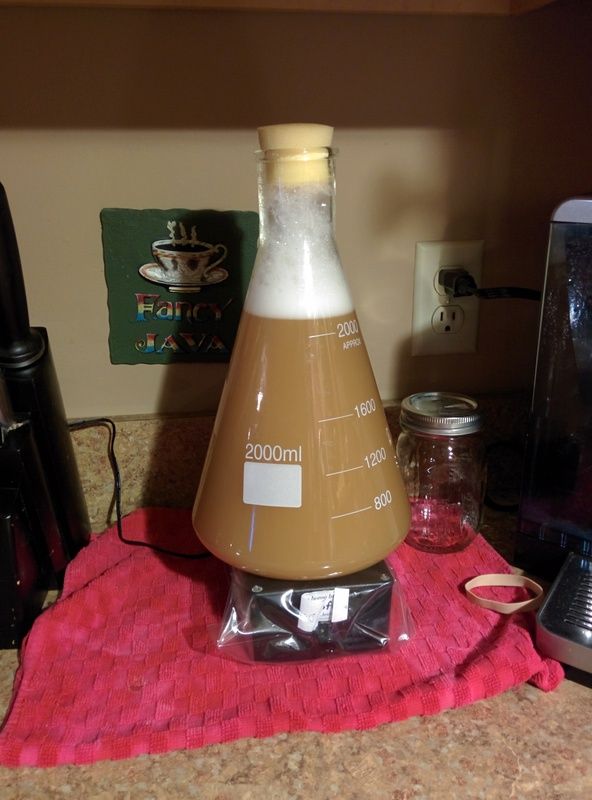BigTerp
Well-Known Member
Planning on harvesting Bell's yeast from 4 bottles of their Amber for an upcoming two hearted ale clone I have planned. Been doing a lot of reading on harvesting from bottle conditioned beers as this will be my first attempt. A few simple questions before I get started though.
Bell's own blog reccommends using 75ml of wort for the first step and then stepping up to 750ml for the second step. 75ml is a pretty small amount and not enough to get a stir plate going. Should I just use my 1 liter flask with a sponge type bung and let it sit for a few days? Maybe give it a swirl every so often? After that has fermented out I'll just add my 750ml of wort to my flask and can then get the stir plate going. After my second step what can I estimate my cell count to be? I'll be using yeastcalc to do further step ups to get what I need for my 10 gallon batch, but need an estimated starting cell count after my 750ml starter. Also, should I be doing the standard 1.037-1.040 gravity wort for the initial steps? Or should I be using a wort with a little lower gravity?
Thanks!!
Bell's own blog reccommends using 75ml of wort for the first step and then stepping up to 750ml for the second step. 75ml is a pretty small amount and not enough to get a stir plate going. Should I just use my 1 liter flask with a sponge type bung and let it sit for a few days? Maybe give it a swirl every so often? After that has fermented out I'll just add my 750ml of wort to my flask and can then get the stir plate going. After my second step what can I estimate my cell count to be? I'll be using yeastcalc to do further step ups to get what I need for my 10 gallon batch, but need an estimated starting cell count after my 750ml starter. Also, should I be doing the standard 1.037-1.040 gravity wort for the initial steps? Or should I be using a wort with a little lower gravity?
Thanks!!


 ) revive this thread for me!!
) revive this thread for me!!
 I want to try harvesting the yeast. So I have a question regarding the idea that yeast from higher ABV beer is not the best option. If one is making a starter/culture with a small amount of yeast then the vast majority of the yeast grown up are new. Assuming good a culturing process, why would they be any different that those originating from a lower ABV beer?
I want to try harvesting the yeast. So I have a question regarding the idea that yeast from higher ABV beer is not the best option. If one is making a starter/culture with a small amount of yeast then the vast majority of the yeast grown up are new. Assuming good a culturing process, why would they be any different that those originating from a lower ABV beer?